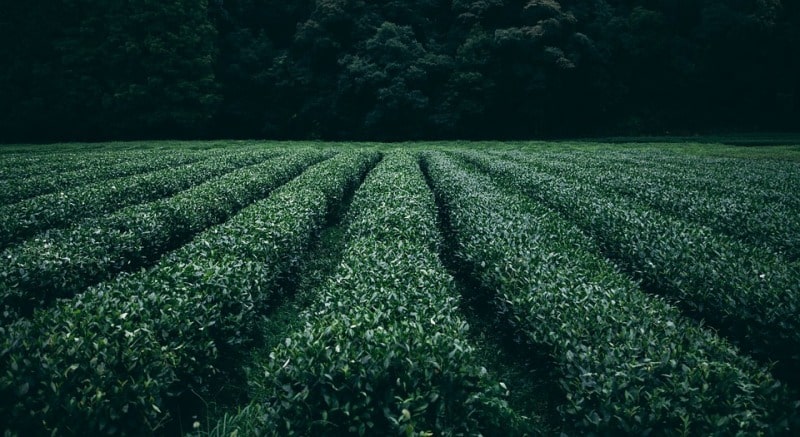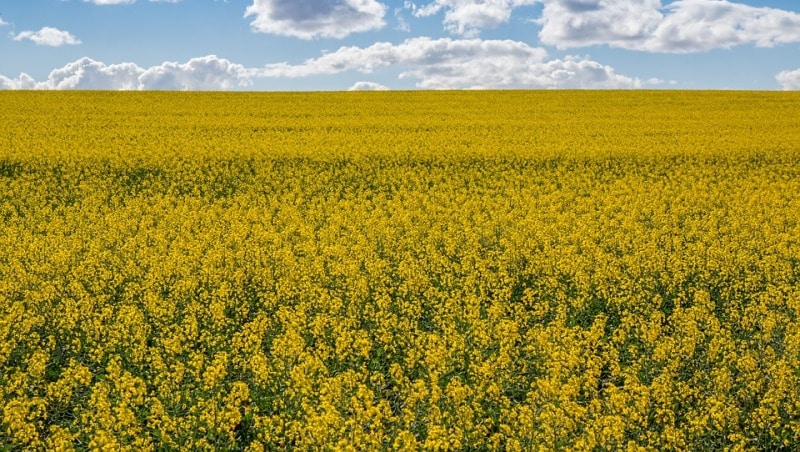A step by step guide to zero tillage farming advantages, practices
Well, today we learn the zero tillage farming advantages and practices along with zero tillage agriculture management activities.
Zero tillage, also referred to as No-tillage or no-till, is a soil cultivation system in which seeds are deposited directly into untilled soil. Zero tillage farming is defined “as a system of planting or seeding crops into untilled soil by opening a narrow slot trench or band only of sufficient width and depth to obtain proper seed coverage. Zero-tillage cultivation is an important farming practice that reduces costs while maintaining harvests and protecting the environment.
Zero tillage or No-tillage is the process where the crop seed will be sown through drillers without prior land preparation and disturbing the soil where previous crop stubbles are present. Zero tillage process not only reduces the cost of cultivation it also reduces the soil erosion, crop duration, and irrigation requirement and weed effect which is better than tillage. Zero tillage also called Nil Tillage or direct drilling.

It is a way of growing crops or pasture from year to year without disturbing the soil through tillage. Zero tillage is an agricultural technique that increases the amount of water that infiltrates into the soil, the soil’s retention of organic matter and its cycling of nutrients. In many agricultural regions, it can reduce soil erosion. It increases the amount and variety of life in and on the soil, including disease-causing and disease organisms. The main benefit of Zero tillage is an improvement in soil biological fertility, making soils more resilient. Farm operations are made much more efficient, mainly improved time of sowing and better trafficability of farm operations.
Zero tillage farming refers to tillage systems in which soil disturbances are reduced to sowing generals and traffic only and where weed country must be achieved by a genital nears. Primary tillage is normally avoided and secondary tillage restricted to Seedbed Corporation in the row zone only. It is also known no-till and is resorted to who soil are subjected to wind and water erosion Zero tilled the soil are homogenous in structure with high population earthworms. Organic matter content increases due to less mineralization.
Control of weeds is the main problem in zero tillage farming. Zero tillage process widely used in humid areas.
Erosion losses and polities are minimized by zero tillage farming. Zero tillage will be a useful concept where than;
- Soils are subject to wind and water erosion. For example in sloppy bare compacted soils with high gilt fine sand.
- Conventional tillage to not yield more.
- A requirement of energy and labor too high.
- In the medium to fine-textured soils use of heavy implements can effect in the formation of hard puncturing wet conditions.
Zero tillage management
Zero tillage farming requires different skills to preserve higher yields; it combines various farming techniques, equipment, crop rotation practices, cover crops, fertilization, and pesticide use to achieve better soil properties. Crop rotation eliminates soil weeds, pests, and diseases. By rotating the crops on a multi-year cycle, pests and disease amount will decrease due to the reduced food supply. Cover crops are used to control weeds, increase nutrients in the soil and to pull mobile nutrients back to the surface of the soil from the lower layers by growing plants with long roots.
Zero tillage or No-till farming is not concerned only with soil tillage it encompasses four broad, intertwined management practices;
- Minimal soil disturbance (no plowing and harrowing),
- Maintenance of a permanent vegetative soil cover,
- Direct sowing and
- Sound crop rotation.
You should also try Natural Pesticides Preparation.
The features of zero tillage agriculture:
Here we discuss features of Zero tillage farming;
- Crop residues are distributed equally and left on the soil surface;
- No implements are will be used to turn the soil over, cultivate it, or incorporate crop residues;
- Weeds and purpose-planted cover crops are controlled by a pre-planting application of a non-pollutant desiccant herbicide;
- A particular planter or drill cuts through the desiccated cover and residues accumulated on the surface of the soil, slotting seed and fertilizer into the soil with minimal disturbance;
- Subsequent weed control is carried out with some pre-emergent but mostly post-emergent herbicides, which also used in conventional tillage;
- Crop rotation is fundamental to Zero tillage since this promotes adequate biomass levels for permanent mulch cover; it assists in the control of weeds, control of pests and diseases, as well as in improving the physical condition of the soil.
- Soil erosion is reduced by 90% and soil biological activity and bio-diversity are maximized.
Zero tillage farming practice:
Zero tillage involves only opening a narrow strip about 2 to 3cm wide or hole in the ground for seed or seedling placement. Zero tillage farming is no pre-planting seedbed preparation. Weeds are taken care of with the use of herbicides and cutlass without disturbing the land. The crop is then planted directly without tilling or plowing the soil, this procedure is highly effective under sloppy lands where soil and water erosion are heavy.
In this method, the soil structure is not disturbed and all soil microorganisms remain intact, the soil is also not prone to erosion and the cost of production is reduced. However, the use of a chemical in this tillage process makes the cost of producing high because of the expensive prices of chemical and sometimes unavailable. Good tillage farming perform is one of the prerequisites to having a good yield.
Soil and water:
Zero tillage farming improves soil quality (soil function), carbon, organic matter, aggregates, protecting from erosion, evaporation of water, and structural breakdown. Reducing of tillage process reduces compaction of the soil. This could help reduce soil erosion almost to soil production rates.
Recently, the Agricultural Research Service of the United States Department of Agriculture found that Zero tillage farming makes the soil much more stable than plowed soil. No-till stores more carbon in the soil and carbon in the form of organic matter is the main factor in holding soil particles together. The first inch of Zero till the soil is two to seven times less vulnerable than that of plowed soil. The practice of Zero tillage farming is especially beneficial to Great Plains farmers because of its avoidance of erosion.
You may also like Wallago Attu Fish Farming.
Crop residues left intact both natural precipitation and irrigation water to infiltrate the soil. Residue also limits evaporation, conserving water for plant growth. Evaporation from tilling reduces the quantity of water by around 1/3 to 3/4 inches (0.85 to 1.9 cm) per pass. By reducing soil compaction and zero tillage-pan, the soil absorbs more water, and roots grow deeper, reaching more water.
Equipment:
Zero tillage farming requires specialized seeding equipment such as seed drills, to plant seeds into undisturbed crop residues and soil. The cost can be offset by selling plows and tractors, but farmers often maintain their old equipment while trying out no-till farming. This would affect more money being invested into equipment in the short term (until old equipment is sold off).
Zero tillage farming advantages
Some of the benefits of Zero tillage will be given below;

Farming costs – Zero tillage farming process reduce labor, fuel, irrigation and machinery costs, and also improve soil function.
Crop residue – The greatest benefit of the Zero-tillage practice arises from the crop residues which stay intact. Crop residues from the previous year’s lie on the field surface, thus cooling it and raising the soil moisture and limiting evaporation. Crop residue protects the soil from the damaging impact of raindrops and the wind and serves as a source of carbon, the essential energy source for benefitting soil organisms.
Reduced fuel and equipment operation – Because farmers practicing Zero tillage farming do not have to run their equipment as often, they are reducing dust in the atmosphere and emissions from the equipment, and are releasing less carbon from the soil into the atmosphere compared to tillage agricultural techniques. The farming equipment tends to last longer because it is used less often.
You should not miss Horticulture Farming; Types of Horticulture.
Healthy soil – Zero tillage farming improves soil quality (soil function), carbon amounts and organic matter, thus protecting the soil from erosion, water evaporation, and structural breakdown. By preserving the natural environment, no-till fields often have larger and more useful insects and earthworms, and a better balance of the microbial community that can even resist disease outbreaks. Those organisms increase the soil’s organic matter content and make their structure. In such an environment, plants increase deep roots which help plants survive droughts.
Increases in crop yields – As soil fertility is built and maintained, and as water is conserved within the soil, Zero tillage farming helps to increase crop yields. However, these benefits of increased yield can take many years, or even decades, to be realized when a transition from tillage to no-till farming occurs.
Farmers save money and increase their profits – Farmers no longer have to pay for the labor and the fuel that could otherwise be required for plowing.
That’s all folks about zero tillage farming advantages and practices.
You may be interested in Growing Kakarakaya from Seed.
Zero Tillage Farming is fantastic! ‘Long-term but has absolute, significant benefits!
Thank you, Agrifarming — ‘very informative! Our existing and future Lot Owners in THE GROVE at Plantation Hills in Tagaytay Highlands will surely benefit from this!
Best,
Grace
Grace de la Cruz Peji
Consultative Property Specialist,
THE GROVE at Plantation Hills, Tagaytay Highlands!
which crops are suitable to zero tillage in Gulbarga (Karnataka State)
This is a wonderful forum to share my practical experiences in agriculture with.